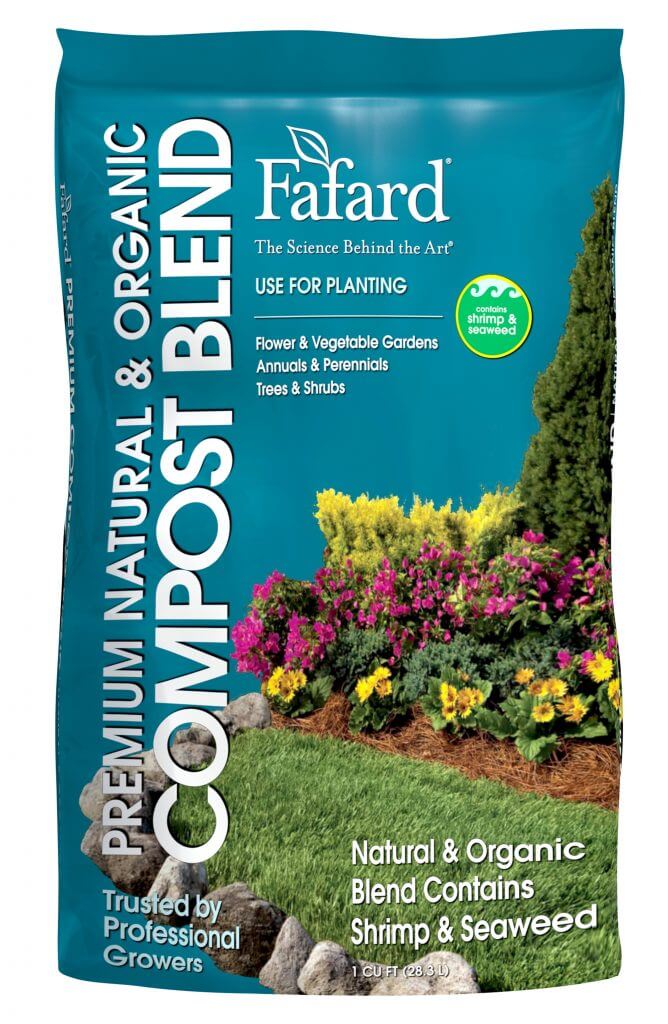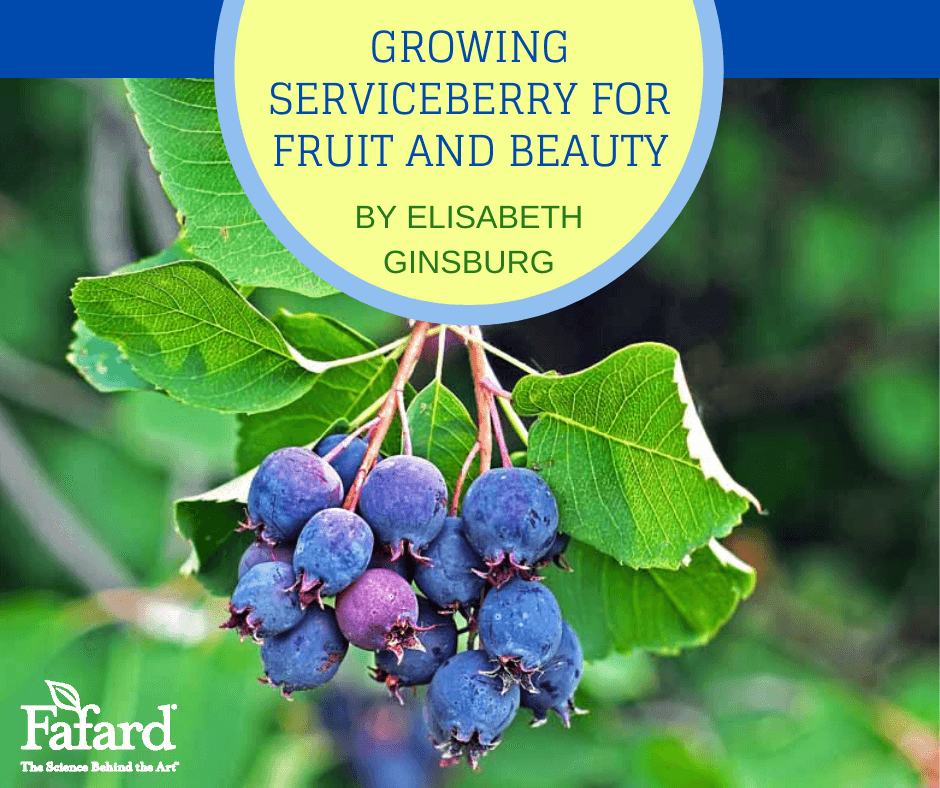
Well-loved plants tend to collect lots of descriptive common names. Serviceberries (Amelanchier spp.) have amassed quite a few, including Juneberry, shadbush, shadblow, May cherry, servicetree, and sarvisberry. No matter what you call them, trees and shrubs of the Amelanchier species deserve attention and appreciation from home gardeners. It is hard to beat them for hardiness, adaptability, four-season interest, and fruits, which are appreciated by both wildlife and people.
Serviceberry Species
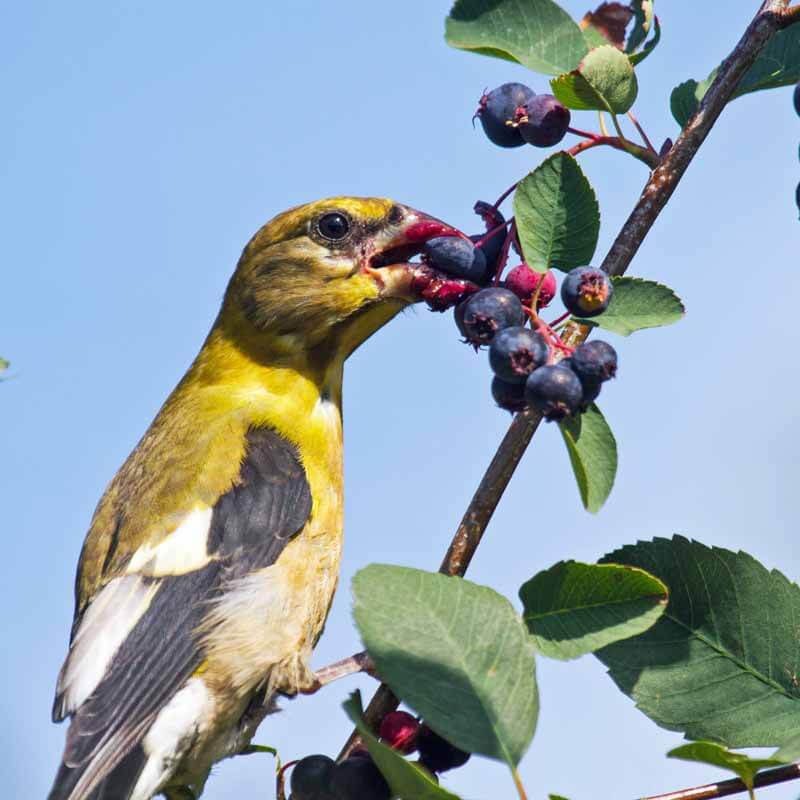
One of the many useful and beautiful landscape plants in the vast rose family (Rosaceae), Amelanchier is a genus of 20 or so north-temperate species of trees and shrubs. In general, they offer showy white spring flowers, edible summer berries of purplish-red or black, festive fall leaves of red, yellow, and orange, and attractive bark and branches in winter.
Most serviceberries are native to North America, and some, like Saskatoon serviceberry (Amelanchier alnifolia, USDA Hardiness Zones 4-7) and Allegheny serviceberry (Amelanchier laevis, Zones 4-8) are unique to these specific geographic areas. Two species, downy serviceberry (Amelanchier arborea, Zones 4-9) and Canadian serviceberry (Amelanchier canadensis, Zones 3-7) are the most widely available commercially and quite a few cultivated varieties and hybrids have been bred. Both are native to the eastern United States and naturally interbreed. In fact, the hybrid apple serviceberry (Amelanchier x grandiflora, Zones 4-9) is a natural cross between the two.
Downy serviceberry can be grown as a large, multistemmed shrub, but is normally available as a small to medium tree. At maturity it grows 15 to 25 feet tall, with an equally wide, rounded crown. Canadian serviceberry has a shrubbier natural habit than downy, and if allowed, it will spread by root suckers to form a thicket. Nurseries usually sell it in tree form, and it will top out at 25 to 30 feet tall, with a crown that spreads 15 to 25 feet.
Spring Blooms
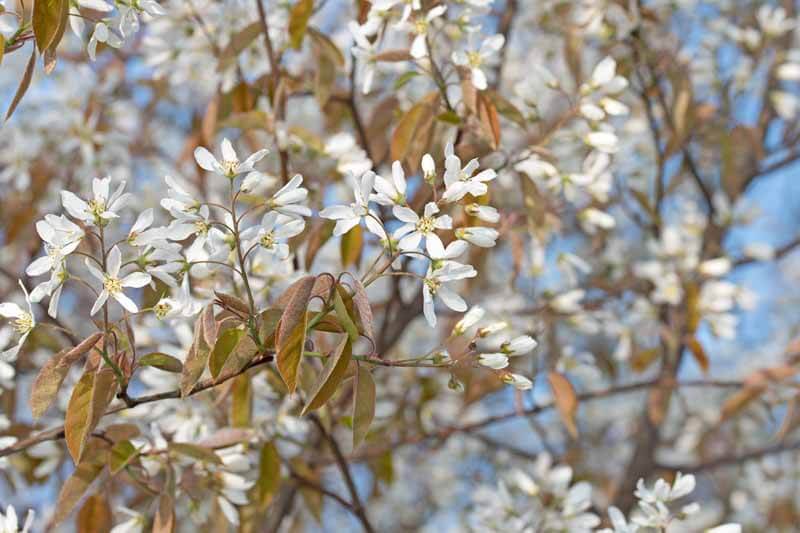
As American novelist and playwright Gertrude Stein said, “A rose is a rose is a rose.” The rose family resemblance is evident in the abundant flowers that appear in early to mid-spring on serviceberries. (The bloom time gave rise to nicknames like shadblow, because shad fish swim upstream to spawn at roughly the same time.) Like single roses, each serviceberry flower has five petals, which are slightly more rounded on Canadian serviceberry than on the downy species. The blooms are white and borne in drooping racemes or flower clusters. To some noses, serviceberry flowers are lightly fragrant. To others, like that of woody plant guru, Michael Dirr, they are “weakly malodorous.”
Sources may disagree on fragrance, but agree on beauty. Like many spring-flowering trees and shrubs, the Amelanchier bloom period is relatively short—generally about a week, depending on the weather—but reliable.
Summer Berries
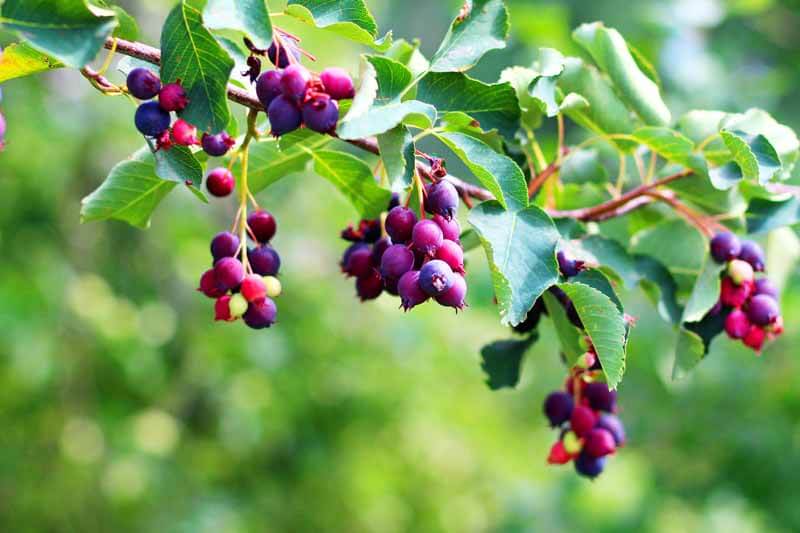
Birds, small animals, and humans all relish the sweet taste of serviceberry fruits, which develop after the flowers have faded. The berries start out green, gradually redden, and eventually become purplish-black to reddish-black when ripe. Though they are not as popular as the blueberries that they resemble, serviceberries have long been made into jams and pies. Would-be pie makers generally have to move faster than the birds in the race for the ripe fruit.
Fall Leaves

Amelanchier leaves are grayish-green, lightly toothed, and may be covered with fine, wooly hairs when they emerge in spring. By the time summer arrives, the leaves are medium green and smooth. Fall provides serviceberry with the second season of glory when the foliage turns shades of yellow, orange, and red. Though the leaves drop earlier than those of some other trees, they make up for it with a brilliant show.
Winter Grace

With leaves departed, serviceberry still retains its good looks through the winter. Its smooth gray bark is striped with reddish fissures or shallow vertical cracks that develop into ridges as the trees age. The striking bark, combined with the branches’ graceful habit, makes serviceberry stand out even in the dark months.
Superb Serviceberry Varieties
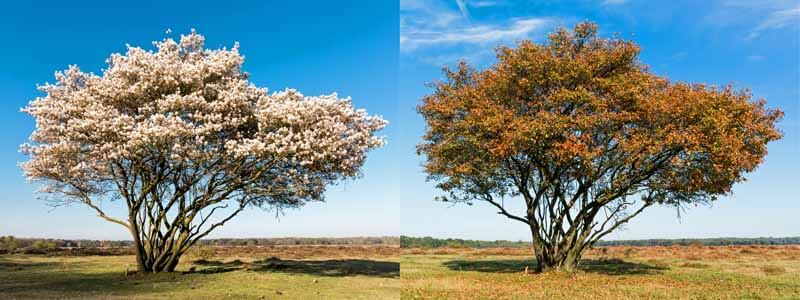
Plant breeders have long appreciated the virtues of various Amelanchier species, varieties and hybrids. ‘Autumn Brilliance’ (Amelanchier x grandiflora ‘Autumn Brilliance’) is a widely available apple serviceberry noted for its dramatic red fall color. Another hybrid, ‘Rubescens’ (Amelanchier x grandiflora ‘Rubescens”), features dark pink flower buds and light pink blooms. Lovers of weeping forms can try to find the rare ‘Silver Fountain’ (Amelanchier x grandiflora ‘Silver Fountain’), and those who prefer a narrow, columnar specimen have the option of selecting Rainbow Pillar® (Amelanchier canadensis Rainbow Pillar®), which also has gold and red fall color.
Serviceberry Care
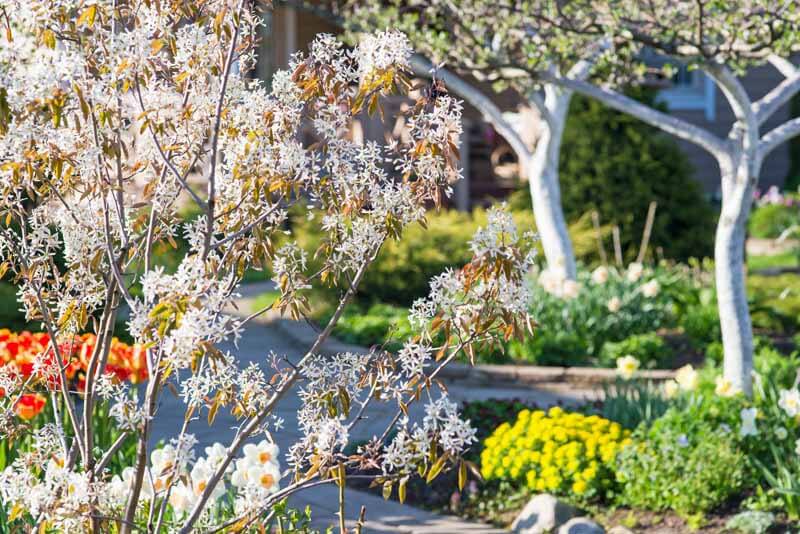
Serviceberries are adaptable but do best in open sunny sites with good drainage and moderate moisture. When you bring your new tree home from the nursery, give it a good start by amending the soil from the planting hole with Fafard Premium Natural & Organic Compost. (Click here for tree and shrub planting guidelines.) Once established, the trees can withstand pollution, moderate drought, and variations in weather. If you want to maintain the erect, tree-like habit, remove all branches that sprout below the main trunk and remove emerging root suckers.
Serviceberries make excellent specimen trees and can blend nicely with mixed perennial and shrub borders. They also work well at the edges of woodland gardens, streams or water features. Given their native plant status and tasty fruits, they are great for native plant landscapes and habitat gardens.
Wherever you put them, serviceberries bring joy to two-legged, four-legged, and winged garden visitors. They are the ultimate multi-taskers.


